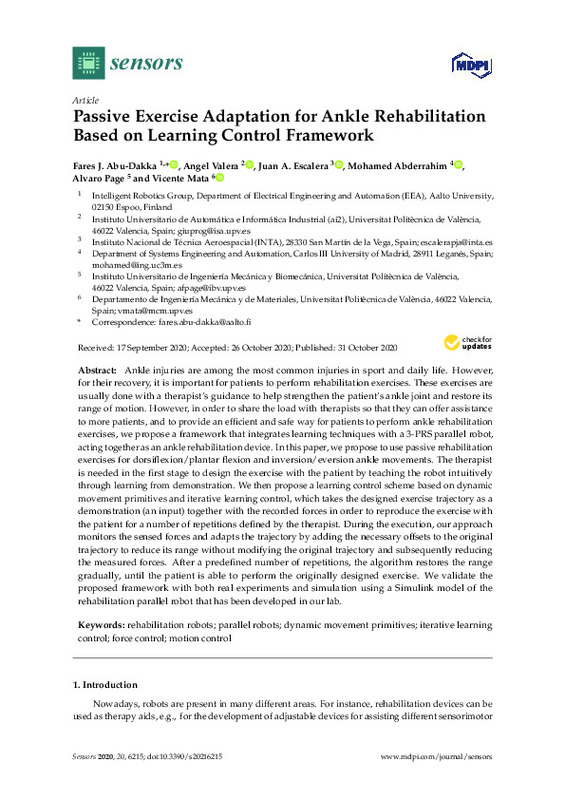JavaScript is disabled for your browser. Some features of this site may not work without it.
Buscar en RiuNet
Listar
Mi cuenta
Estadísticas
Ayuda RiuNet
Admin. UPV
Passive Exercise Adaptation for Ankle Rehabilitation Based on Learning Control Framework
Mostrar el registro completo del ítem
Abu-Dakka, FJ.; Valera Fernández, Á.; Escalera, JA.; Abderrahim, M.; Page Del Pozo, AF.; Mata Amela, V. (2020). Passive Exercise Adaptation for Ankle Rehabilitation Based on Learning Control Framework. Sensors. 20(21):1-23. https://doi.org/10.3390/s20216215
Por favor, use este identificador para citar o enlazar este ítem: http://hdl.handle.net/10251/176352
Ficheros en el ítem
Metadatos del ítem
| Título: | Passive Exercise Adaptation for Ankle Rehabilitation Based on Learning Control Framework | |
| Autor: | Abu-Dakka, Fares J. Escalera, Juan A. Abderrahim, Mohamed | |
| Entidad UPV: |
|
|
| Fecha difusión: |
|
|
| Resumen: |
[EN] Ankle injuries are among the most common injuries in sport and daily life. However, for their recovery, it is important for patients to perform rehabilitation exercises. These exercises are usually done with a therapist's ...[+]
|
|
| Palabras clave: |
|
|
| Derechos de uso: | Reconocimiento (by) | |
| Fuente: |
|
|
| DOI: |
|
|
| Editorial: |
|
|
| Versión del editor: | https://doi.org/10.3390/s20216215 | |
| Código del Proyecto: |
|
|
| Agradecimientos: |
This work has been partially funded by the FEDER-CICYT project with reference DPI2017-84201-R (Integracion de modelos biomecanicos en el desarrollo y operacion de robots rehabilitadores reconfigurables) financed by Ministerio ...[+]
|
|
| Tipo: |
|









